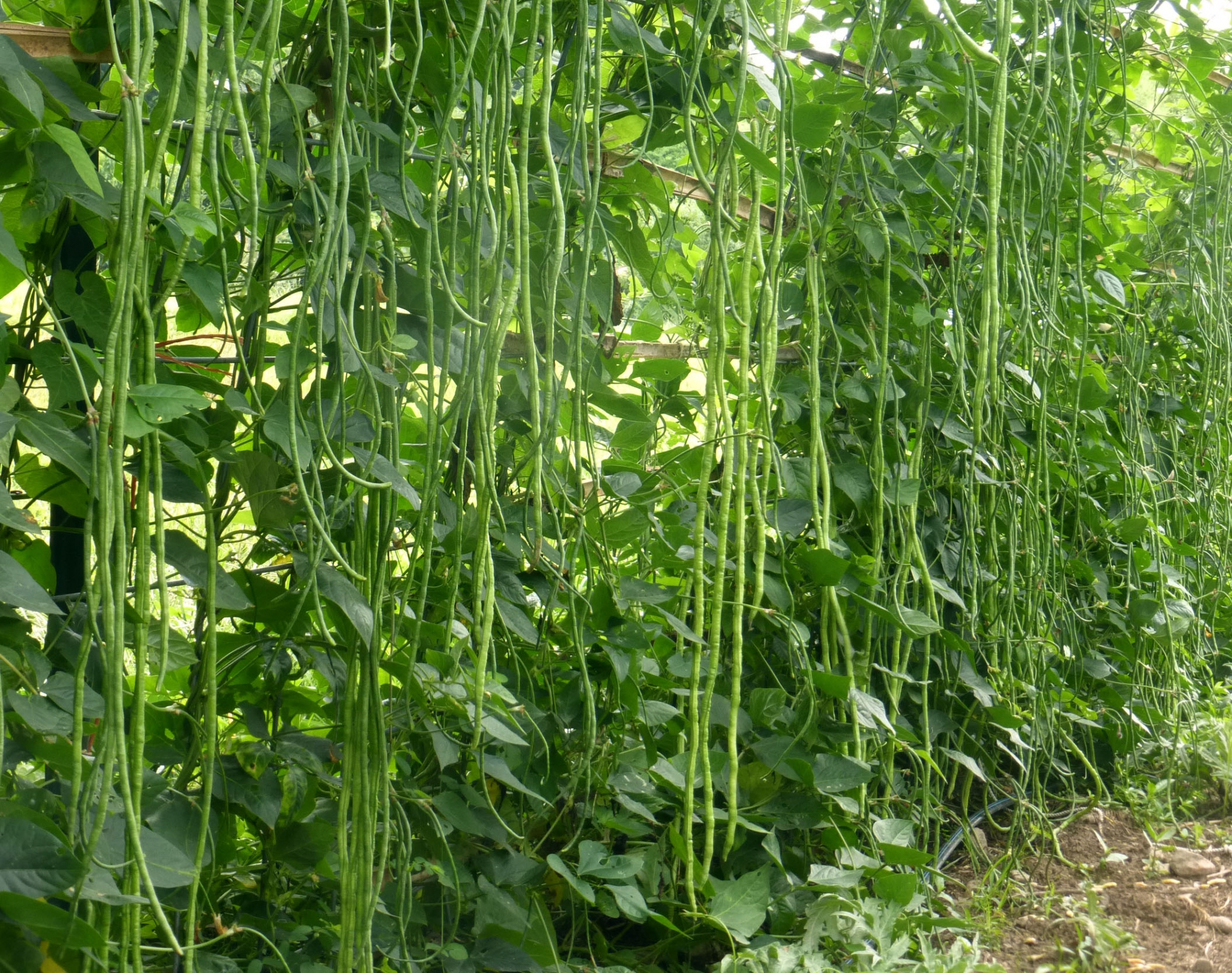
Chewy and flavorful yard long beans, also known as Chinese snake beans, are closely related to black-eyed peas. Its immature, tender, edible pods are one of the most popular pod-vegetables used in the Philippines and other East Asian cuisines. The beans are also grown in small scales in the home gardens in Southern United states, West-Indies as well as in the Mediterranean regions.
The yard long pods are actually legumes belonging to the Fabaceae family. The beans were thought to have originated in southern Chinese Yunnan province. Scientific name: Vigna unguiculata, sub. sesquipedalis. Some of the common names include asparagus-bean, string-bean or Chinese snake beans. The beans in general recognized by local names as bora (West Indies), dau gok (China), pole sitao (Philippines), etc.
Yard-long bean is a fast growing annual plant; require trellis to support its growth. Dwarf and tall climbing varieties exist. Depending upon the cultivar type, it bears blue to violet flowers after about 6-10 weeks of seedling. Numerous pencil thin, tender, light-green, flexible-textured pods appear after about another two to four weeks following flowering. These fleshy, pendulous pods are usually harvested while they are immature and eaten as green vegetables. The pods vary in length that ranges from 30 to 80 cm.
As in other bean varieties, harvesting may not be a time-guided event. The pods usually harvested early for young, immature beans, or they may left on the shrub to dry-out in order to obtain dried beans. Continue reading →
















